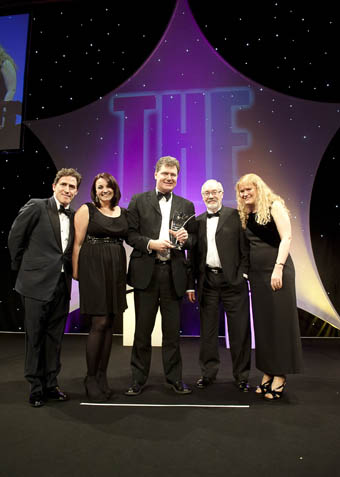The need to control and prevent infection is of increasing significance. ROLEST was established to investigate and develop electro-technologies to combat public health problems and to provide novel solutions to difficult, and emerging, clinical challenges, as well as supporting the development of new medical technologies and procedures.
Established in 2004, ROLEST is a state-of-the-art facility comprising a combined Category 2 Microbiology and Electrical Engineering Laboratory and research infrastructure. It's a truly unique research facility. Electrical engineers, biomedical microbiologists, physicists and bioengineers work together to carry out leading-edge, multi-disciplinary research dedicated to the development and application of novel electrically based disinfection and sterilisation technologies to achieve effective inactivation of microbial pathogens. This involves optimising the innovative technologies to provide engineering-based solutions to complex problems ranging from hospital-acquired infection to bio-terrorism. All functions and operations relating to the culturing of pathogenic microorganisms, their exposure to inactivation treatment and analysis of performance are carried out within the facility.
Its research programmes have involved engagement with the NHS, the food and drinks industry, and other industrial partners who have an interest in infection control and public health.
Key technology areas
Four main sterilisation and decontamination technology areas are investigated and developed within ROLEST.
Pulsed Electric Fields (PEF) Inactivation
Exposure of microbes to very short, high voltage pulses causes electroporation (bursting) of the microbe’s cell membrane. Key PEF parameters such as pulse profile and duration as well as mode of delivery have been optimised for the destruction of microbes in contaminated liquids. For example, PEF has been used to inactivate Mycobacterium paratuberculosis in milk and to destroy spoilage microbes in products such as beer and wine. Recent collaborative studies with the Department of Biomedical Engineering at Strathclyde have shown that PEF treatment also has considerable potential as a non-thermal sterilisation method for collagen-based biomaterials used in the rapidly expanding field of tissue engineering.
Advanced Oxidative Technologies
Highly oxidising chemicals, produced using various electrical techniques including ozone, plasma and corona discharges, destroy microbes by causing oxidative damage to the cell membrane and other sensitive structures. Potential applications for these include:
- water decontamination
- decontamination of air and contact surfaces
- biocidal washing of food products and food contact surfaces
- the destruction of pathogens in contaminated liquids such as the inactivation of Salmonella and Campylobacter pathogens in poultry wash water
Pulsed Ultraviolet (PUV) Light Exposure
Delivery of very short pulses of intense UV-rich light inactivates microbes by causing lethal damage to their DNA molecules. Research on PUV using high intensity UV-radiation from a pulsed xenon light-source has established the optimum wavelengths and energy dose levels required to kill bacteria such as E. coli and Listeria monocytogenes, and viruses such as the polio and adenoviruses.
Research has demonstrated that PUV is a strong candidate technology for water purification and also decontamination of surfaces in food and pharmaceutical processing operations.
High-Intensity Narrow-Spectrum Light (HINS-light)
High-intensity narrow-spectrum light (HINS-light) is a narrow bandwidth of visible violet light with optimal antimicrobial activity at 405 nm. Exposure to light of this wavelength induces a photo-excitation reaction within microorganisms which results in the production of reactive oxygen species, and oxidative damage to the microbial cell. Importantly, this lethal damage to the microbial cells can be exerted at doses which are safe for human exposure.
Through an extensive research programme involving laboratory and in-situ clinical evaluation, the HINS-light technology has been developed as a ceiling mounted light source for environmental decontamination applications. Clinical evaluation has demonstrated its effectiveness for continuous decontamination of hospital environments, providing disinfection of air and contact surfaces in working environments, with no disruption to patients or staff.
This work has received supported from EPSRC, the University of Strathclyde, Scottish Enterprise PoC funding, the Chief Scientist Office and the Scottish Infection Research Network.
The ROLEST HINS-light project to kill pathogens such as MRSA in clinical environments won The Times Higher Education Research Project of the Year 2011.
